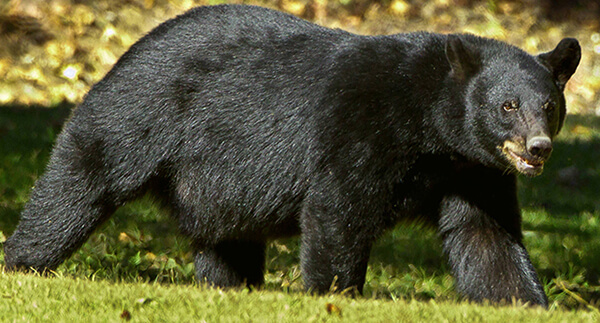
Photo courtesy of U.S. Fish and Wildlife Service.
Black bears (Ursus americanus) were historically abundant across Indiana, excluding the northwest portions of the state dominated by prairie. Unregulated hunting and habitat loss caused black bears to be extirpated from Indiana and much of the Midwest by 1850. Today, black bear populations are expanding and they may pass through Indiana from established populations in adjacent states. In recent years, four black bears have been confirmed (2015, 2016, 2018, 2021) in Indiana.

Description
- Black bears are typically black with a tan muzzle, though farther West coloration can vary to brown and cinnamon.
- Black bears have a long snout, rounded ears, and small eyes.
- Typically, males weigh 150-400 pounds and females weigh 100-250 pounds.
- Black bears are omnivorous, feeding on grass, seeds, berries, insects, rodents, and deceased animals.
- Black bears are intelligent and have a keen sense of smell and hearing.
- Black bears are generally timid and not aggressive toward people.
Black bears were once an exotic species, and are now protected under Indiana Administrative Code 312 IAC 9-3-18.8.
News releases
- Aug. 20, 2021 - Dead black bear found on Elkhart County roadside
- June 27, 2021 - Black bear confirmed in Vanderburgh County
- Nov. 11, 2018 - Black bear hit by motor vehicle near New Albany
- July 18, 2016 - DNR confirms black bear report in southern Indiana.
- July 17, 2015 - Black bear to be trapped and relocated.
- June 15, 2015 - Black bear continues westward path in northern Indiana.
- June 12, 2015 - Wandering black bear confirmed in St. Joseph County.
